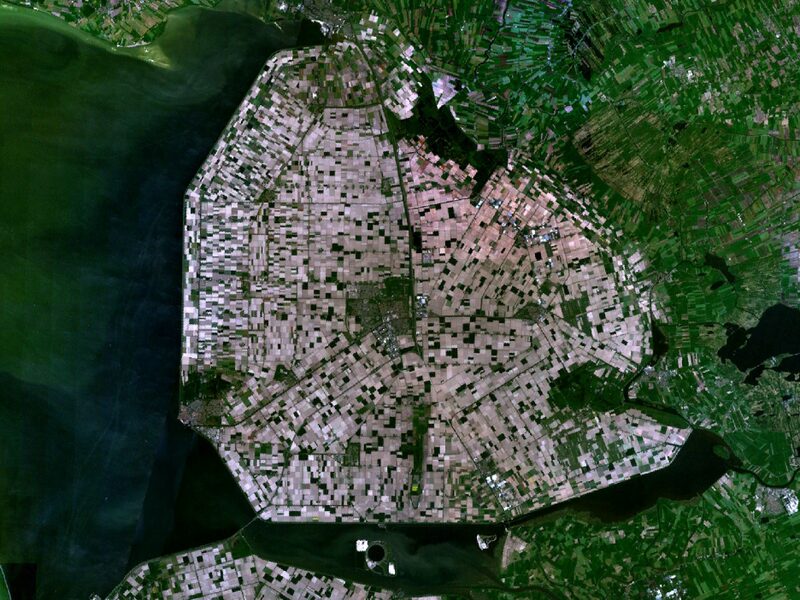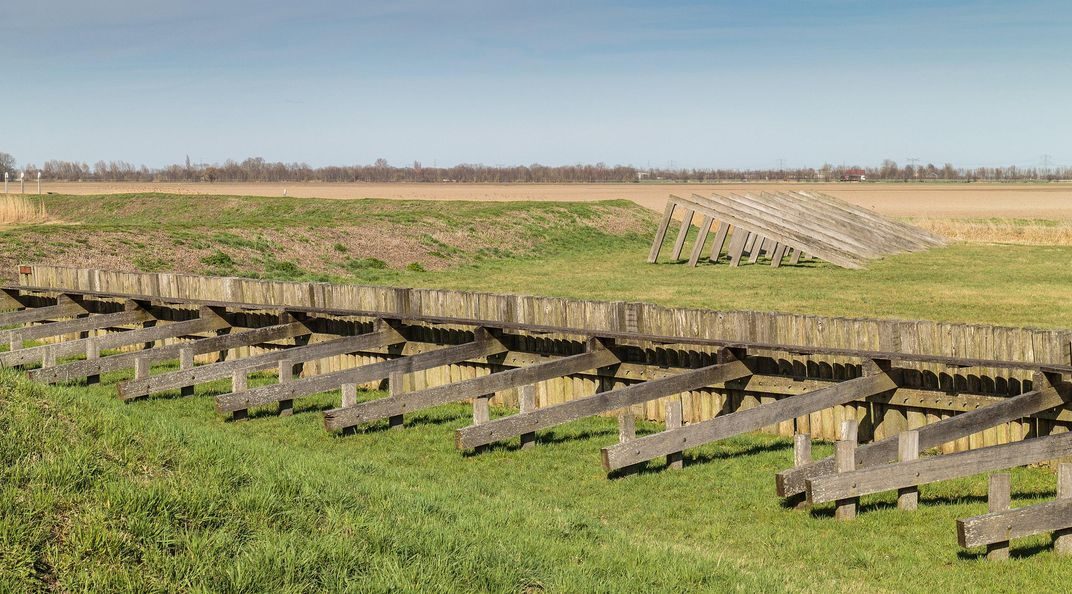
As Dutch regional broadcaster Omroep Flevoland reports, Yftinus van Popta, an archaeologist at the University of Groningen, has identified four "drowned" medieval villages in the Noordoostpolder, a low-lying tract of land reclaimed from the Zuiderzee in the 1940s, after five years of extensive research. (Per the United States Geological Survey, engineers reclaimed the Noordoostpolder and other flood-prone polders by draining water from the Zuiderzee and building a series of dikes.)
Medieval sources suggest that the settlements, called Marcnesse, Nagele, Fenehuysen I and Fenehuysen II, were first inhabited during the 10th and 11th centuries A.D. At some point in the 13th century, the Zuiderzee flooded, submerging the four towns and masking most traces of their existence.
Van Popta tells Henk Kraijenoord of Dutch newspaper Reformatorisch Dagblad that he located the lost villages by revisiting archaeological finds recorded during land reclaiming campaigns in the 1940s and '50s.
Researchers had previously theorized that these items had fallen from ships traveling through the area. But as van Popta explains to Dutch broadcaster NOS, "Those things ended up there between 1100 and 1300 A.D. The oldest ships were there between 1250 and 1300 A.D."
Among the artifacts recovered were bones, bricks and pottery.

To extrapolate the villages' locations from the finds, van Popta inputted soil profiles, historical maps, elevation maps and satellite images into a spatial analysis computer program. His results identified clear areas of interest, as well as locations in which no material had been found.
The research also revealed fascinating details about the town's medieval inhabitants. Most were farmers who lived in wooden houses, grew rye in their fields and owned a small herd of cows, says van Popta to Reformatorisch Dagblad.
One settlement in the area, Overijsselse Kampen, was likely the most successful, as it later grew into a major center of commerce, per Omroep Flevoland. Nagele, comparatively, housed no more than 20 to 30 inhabitants; because it was built on peat soil, as opposed to a more solid rock foundation like Urk, Nagele was more susceptible to storm surges — a fact that accounts for its disappearance during a particularly serious bout of flooding.
These initial findings are likely just the tip of the iceberg. Next year, Van Popta plans on returning to the area to conduct more "targeted research" into the settlements, as he tells NOS.
"We have actually made sure that no more digging is allowed in the area," the archaeologist adds. "Farmers are still allowed to plow up to 30 centimeters deep, but before they can put up a new barn, for example, they have to do research."



So according to this articles it's a fascinating detail that a farmer grew rye and owned cows? I wonder what they think these farmers were doing as farmer.